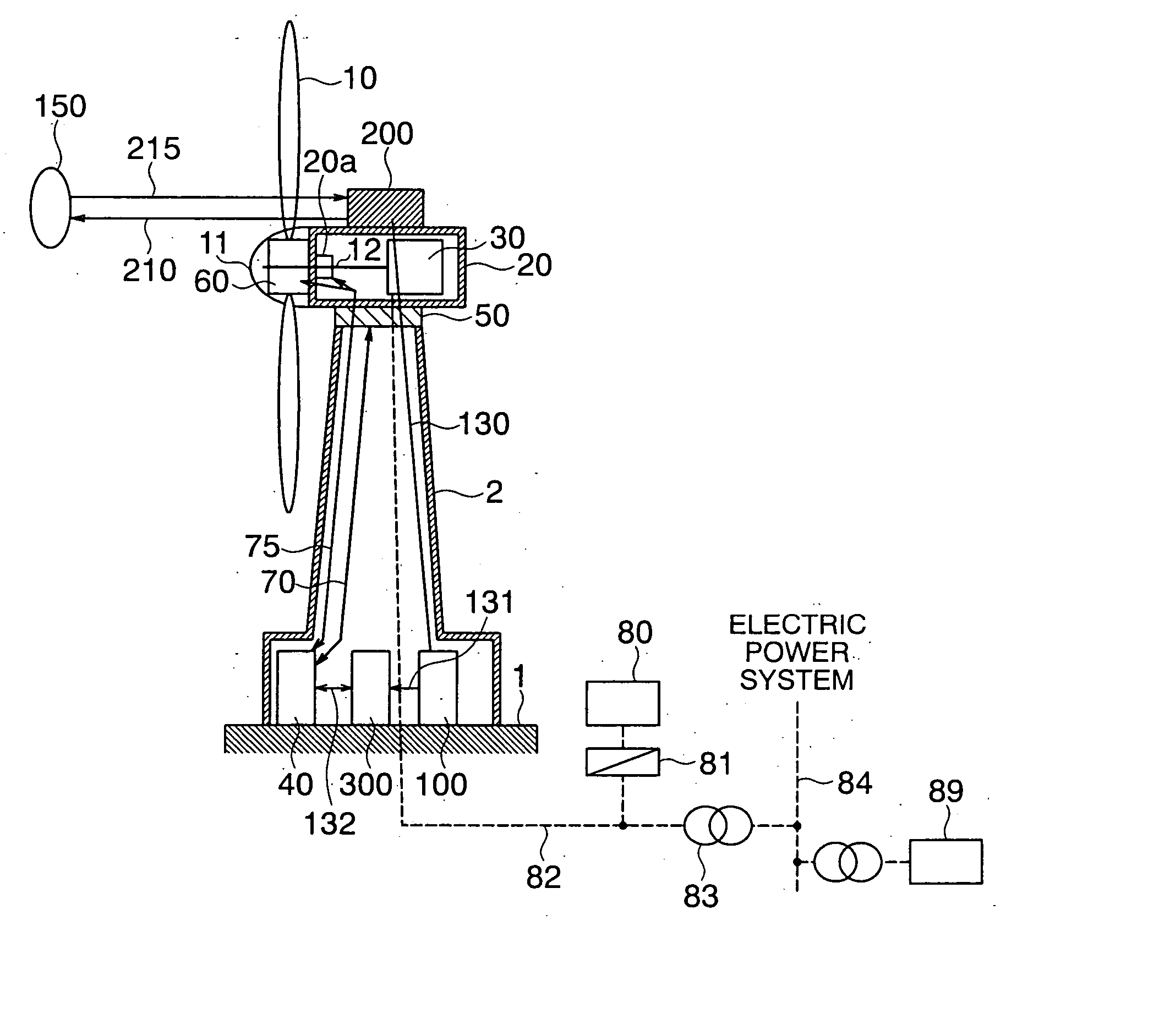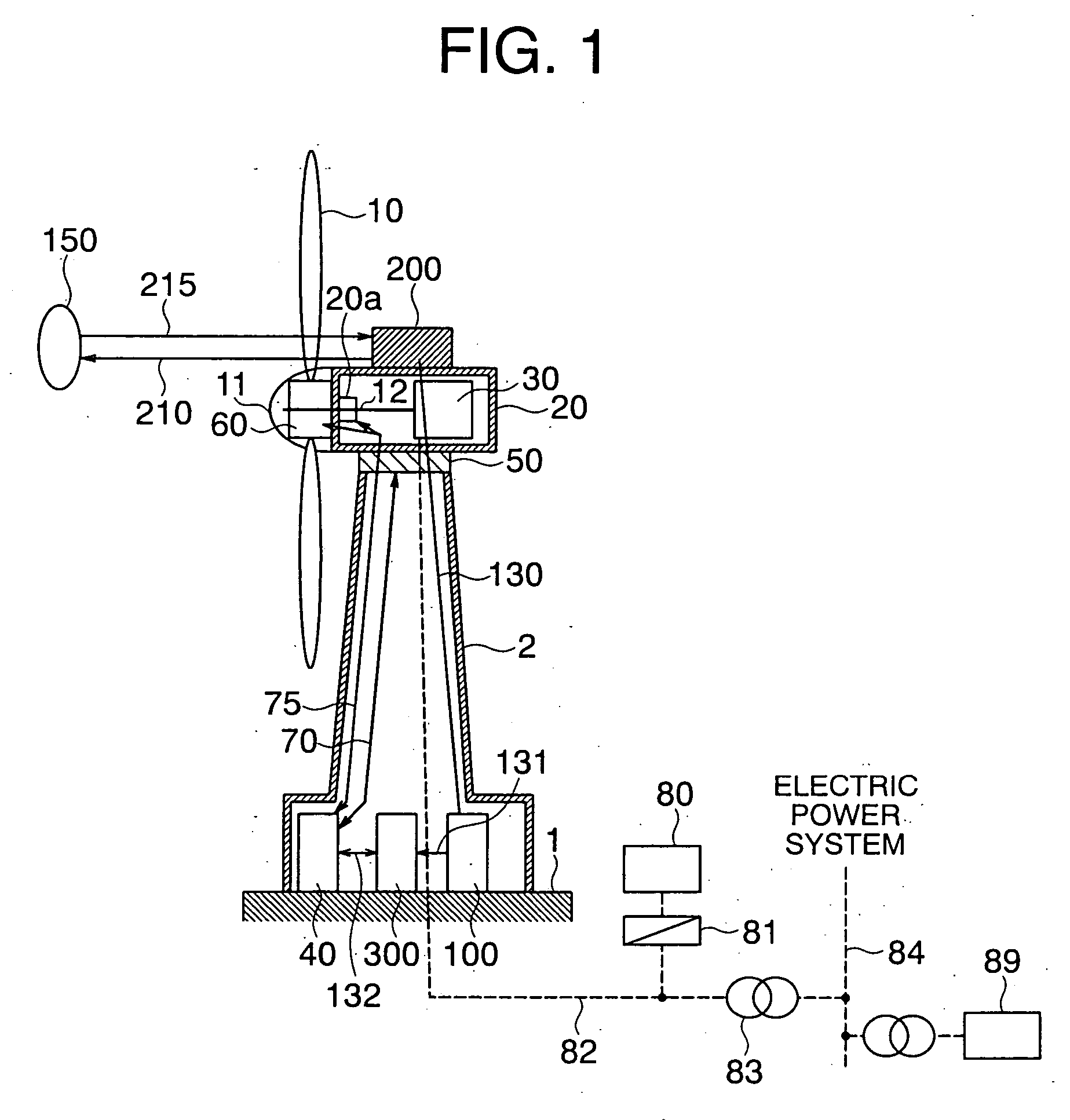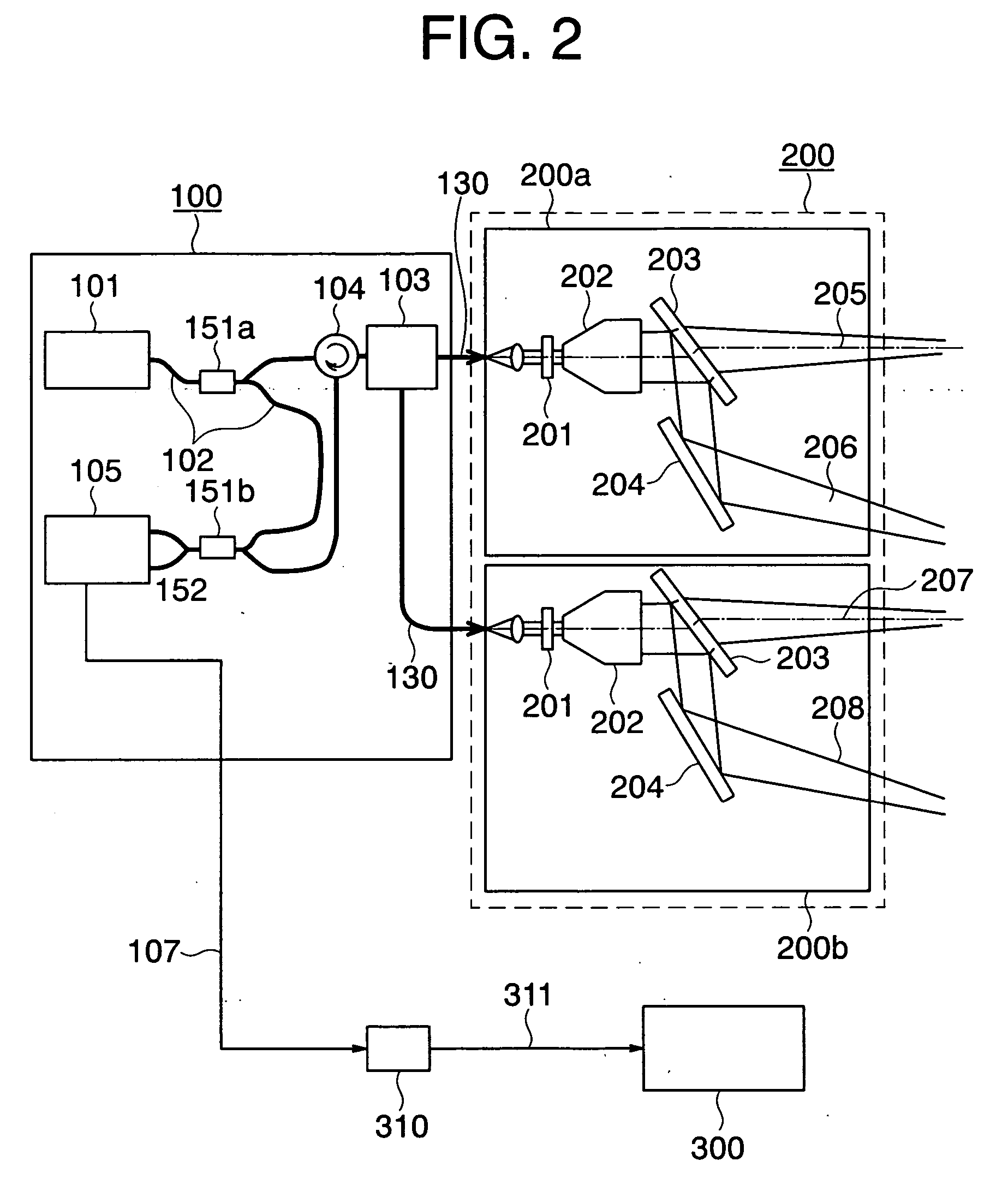Wind power generation evaluation system and predictive control service system for use with wind power generator
a technology of evaluation system and service system, which is applied in the direction of electric generator control, machines/engines, mechanical equipment, etc., can solve the problems of not being able to improve the performance of the wind power generator itself, affecting the environment, and not being able to perform conventional functions that evaluate the benefits of the operation
- Summary
- Abstract
- Description
- Claims
- Application Information
AI Technical Summary
Benefits of technology
Problems solved by technology
Method used
Image
Examples
first embodiment
[0115] (Evaluation of Benefits Obtained by Predictive Control of Wind Power Generator Using Laser Aerovane)
[0116] Next, an evaluation of benefits of increasing the output or smoothing the output by the use of the predictive control technique using a laser aerovane will be described. A party who has the predictive control technique using a laser aerovane rents the predictive control system using a laser aerovane to the owner of a wind power generation system or to a party who is in charge of running the wind power generation system.
[0117] Control of Yaw Angle
[0118]FIG. 15 conceptually illustrates a difference about yaw angle control between the amount of power generated in the absence of a laser aerovane and the amount of power generated in the presence of a laser aerovane. The (a) of FIG. 15 shows the relation between a change of the wind direction and the direction of the windmill, and (b) of FIG. 15 shows the time chart. In FIG. 15, as has been described with FIG. 5, the use of...
second embodiment
[0137]
[0138]FIG. 19 schematically shows another configuration of the wind power generation system according to the present invention. In FIG. 19, the system includes a resistor or a power absorbing device 90 that is connected through a power converter 81 to the electric-power-system-side output end of the wind power generation system. The power converter 81 is controlled by power instructions given from a power controller 1007 on the basis of signals from the aerovane signal processing section 300 and the controller 40 of the wind power generator shown as the generator 30 and the blades 10, and signals from a wattmeter 1005 provided on the power cable 82. The electric power system 84 is connected to load equipment 1003 through the transformer 83a and to a power company through a precision watt hour meter 1001. In order to restrict output fluctuations within limits that the electric power system permits, the resistor (or power absorbing device) 90 has a function of releasing electric...
third embodiment
[0142]
[0143]FIG. 22 illustrates the configuration of an application of the present invention to a hybrid power generation system in a weak system, e.g., on an isolated island. In the example of a hybrid power generation system shown in FIG. 22, a combination of wind power generators 610a to 610e, Diesel-engine power generators (DGs) 89a and 89b, a large-capacity storage battery 80a, a storage battery 80, and a load 1003 is connected to an electric power system network SN. Each of the wind power generators 610a to 610e is equipped with an evaluation calculation section 400, and the evaluation calculation sections 400 are connected to a network N as shown in FIG. 21. The network N, e.g., the Internet, is not shown in FIG. 22. The evaluation calculation sections 400 may be connected to the network through communication. Data from the laser aerovane (100, 200, and 300) may also be transferred through communication.
[0144] The output of the wind power generation system is predicted on th...
PUM
 Login to View More
Login to View More Abstract
Description
Claims
Application Information
 Login to View More
Login to View More - R&D
- Intellectual Property
- Life Sciences
- Materials
- Tech Scout
- Unparalleled Data Quality
- Higher Quality Content
- 60% Fewer Hallucinations
Browse by: Latest US Patents, China's latest patents, Technical Efficacy Thesaurus, Application Domain, Technology Topic, Popular Technical Reports.
© 2025 PatSnap. All rights reserved.Legal|Privacy policy|Modern Slavery Act Transparency Statement|Sitemap|About US| Contact US: help@patsnap.com



